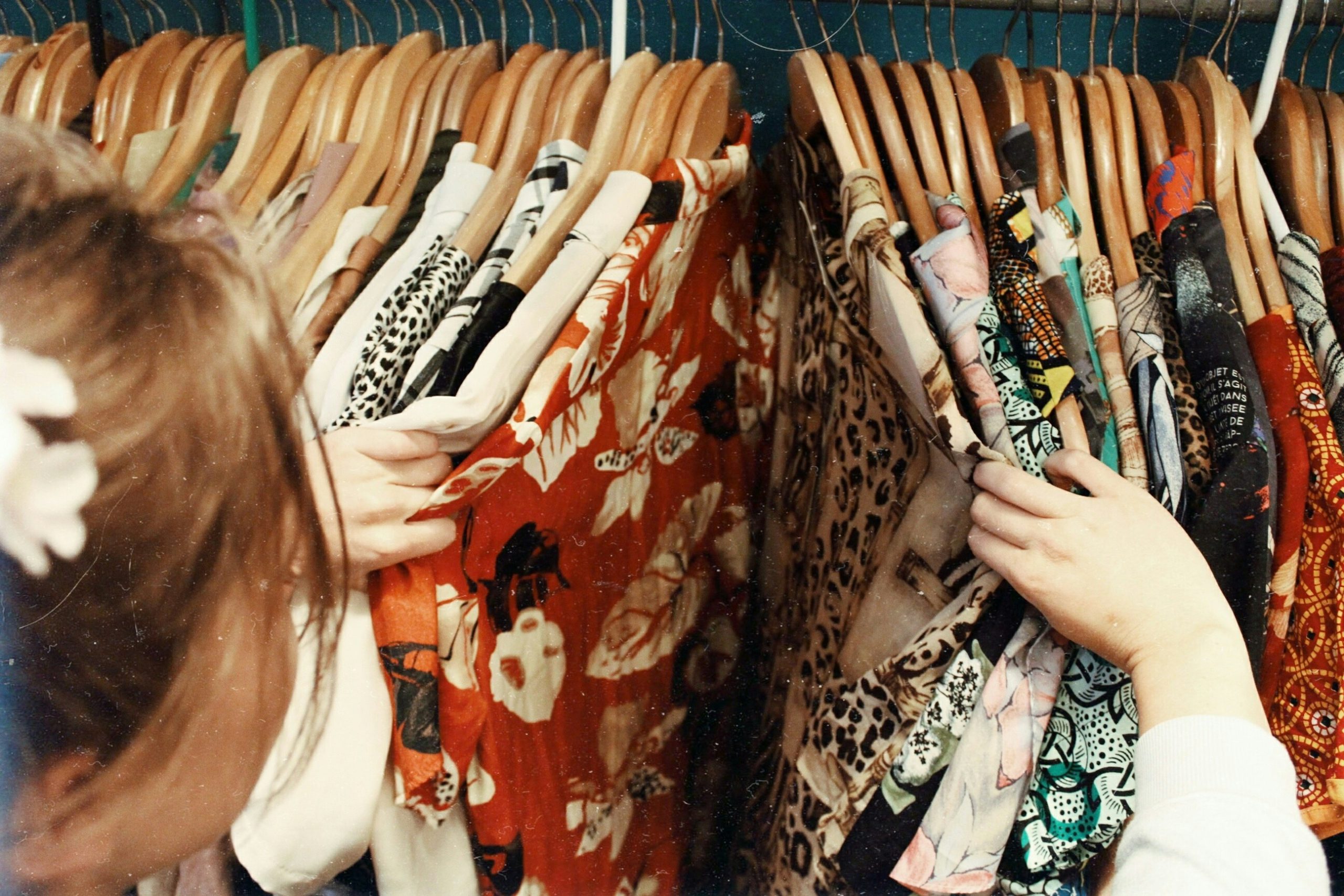The body positivity movement has become a marketing tactic to mislead plus size shoppers

Photo by Becca McHaffie.
Shopping as a plus size person has never been easy, but recently it has become even more challenging because brands are lying about size inclusivity.
Over the past few years, the body positivity movement has transformed, and not necessarily for the better.
Despite an increase in promoting size inclusivity, many brands are misleading their plus size customers, from only offering plus sizes online to using body positivity as a marketing tactic to increase sales.
A 2016 study found that the average American woman wears a size 16-18, yet the majority of stores still only carry up to a 12 or 14.
Old Navy is one of many brands under continued scrutiny for their seemingly surface-level commitment to size inclusivity. In Aug. 2021, they announced their “BODEQUALITY” initiative, bringing sizes 0-28 in stores and 0-30 online. In their initial press release, Gap INC., Old Navy’s parent company, announced that they were going to “redefine size inclusion, offering every one of its women’s styles, in every size, with no price difference.”
However, in May 2022, the company announced that they would be scaling back plus sizes, stating in a press release: “While pleased with our new customers and brand health … we have not seen the expected demand for extended size products in our stores channel and as such, will be further realigning our in store inventory later this year to better meet demand.”
In 2022, much of the world was still in lockdown due to a global pandemic, which could perhaps explain why sales were down. However, this was apparently an insufficient excuse for a decrease in sales. Now, once again, Old Navy’s plus size shoppers are resigned to ordering the majority of their clothing online, with plus sizes appearing in stores almost exclusively as a result of another shopper returning their online order.
More recently, plus size shoppers have noticed that brands such as H&M have removed photos of plus size models from their website in the plus size clothing section.
H&M is also one example of a brand which misleads plus size shoppers by categorizing clothing items as plus size, when they only go to an XL or XXL — which, contrary to popular belief, are not equivalent to sizes 1X and 2X.
Many brands will boast about body positivity and extended sizing, while only offering their plus sizes online. H&M, for instance, often only carries up to an XL or XXL in store and only offers 3X and 4X online.
Further, many brands will use the addition of plus sizes as a marketing tactic to generate more sales and positive publicity, creating the illusion of size inclusivity despite only adding two or three sizes.
In 2020, Lululemon, a brand with a history of both fatphobia and racism, came out with extended sizes in a number of items, the majority of which were only available online. The brand framed this as offering sizes 0-20, but in reality, they only added three sizes (16, 18, and 20), making this decision seem far more significant than it actually was.
The inconsistency of women’s clothing sizes also contributes to this lack of size inclusivity. Even if brands do offer plus sizes, they are often very inconsistent from one brand to another. Somehow it’s possible to be a 1X in one store while simultaneously being a 3X in another.
Old Navy, H&M, and Lululemon are only a select few of the numerous brands who take advantage of the body positivity movement as a marketing tactic.
I feel lucky that I am able to fit into some straight sizes — depending entirely on the brand — but many people depend on stores carrying inclusive sizes. Your size should never determine whether or not you’re able to shop for clothes in store.








